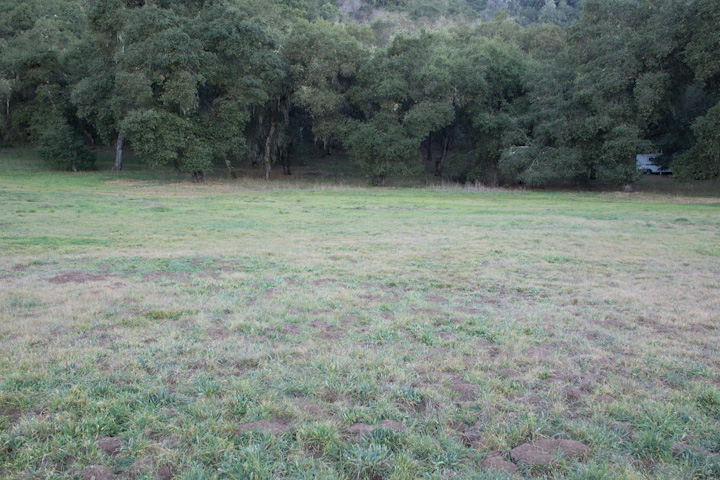In this and the next few posts I will give you an informal analysis of the performance of the Sony Zeiss 24 mm f/1.8 E-series lens. I will be comparing it to two other 24 mm lenses: the Leica 24 mm f/2.8 Elmarit ASPH, and the Leica 24 mm f/3.8 Elmar ASPH. I thought about adding the Nikon 24 mm f/1.4 into the mix, but I don’t think many people would use that lens on the NEX-7 because of its size and weight.
This first post will be about performance with low contrast subject matter.
Here’s the scene at f/5.6, first with the Zeiss:
Next with the Elmarit:
and finally with the Elmar:
I will show how each lens performs at a number of f-stops in both the center of the image in the upper left corner. The images are presented at twice the single pixel scale, using nearest neighbor for the upscaling; this produces a 2 x 2 block of identical pixels for each pixel in the original image, and seems to do all right with the JPEG compression necessary for web presentation. The order of the lenses in the group presentations is as follows: the Zeiss at the top, the Elmarit in the middle, and the Elmar at the bottom. Only the Zeiss is capable of making images at f/2, so there’s only one image in that set. Only the Zeiss and the Elmarit can make images at f/2.8, so there are only two images in that set. The ISO was sent to 100 for all the photographs. The images were converted from raw in Lightroom 3.6, with sharpening and noise reduction turned off. I did not correct for corner color errors, but I did change the white point on the magnifications of the upper left corner from 255 to 198 to make the distinctions between the lenses easier to see, and to reflect corrections that might be done to the corners in processing images rate with these lenses.
At f/2, the Zeiss is a little soft in the center, but not unacceptably so:
At f/2.8, the Zeiss is crisping up quite nicely, but the Elmarit is slightly sharper:
At f/4, all three lenses are doing quite well, with the Zeiss a bit ahead of the Elmarit, and the Elmar just a hair behind:
f/5.6 is the sharpest aperture for all three lenses, and there’s really not a lot to choose between them in the center at this aperture:
Contrast and sharpness both suffer at f/8 in all three cases, with the Zeiss giving the worst performance at this aperture, but not to a great degree:
Things continue to go downhill at f/11. All three lenses are substantially identical at this aperture. At f/16 (not shown), the trend continues:
In the upper left corner at f/2 with the Zeiss, the image is softer than at the center, but it’s not bad. It will take further testing to find out if the corner softness is because of field curvature (I focused in the center of the image) or inherent resolving power:
At f/2.8, the Zeiss’s performance has improved substantially, and the Elmarit is looking really soft. The green fringing on the Zeiss image in this and following comparisons is an artifact caused by the conversion of the image to sRGB for the web; it doesn’t occur in the Leica lens images because of the purple corners:
The Zeiss improves marginally at f/4, still besting the Elmarit. The Elmar and the Zeiss offer similar performance:
By the time we get to f/5.6, all the lenses of performing at their best. It’s very close, but I’d give the Elmar a slight edge over the Zeiss, with the Elmarit trailing:
The Zeiss and the Elmar suffer slightly at f/8, and the Elmarit is about the same as it is at f/5.6:
All three images are starting to soften at f/11:
Things are getting pretty blurry by f/16:
All in all, I’m very impressed by the performance of the Zeiss lens in this test, even setting aside the fact that it costs far less than the other two lenses.
















Leave a Reply